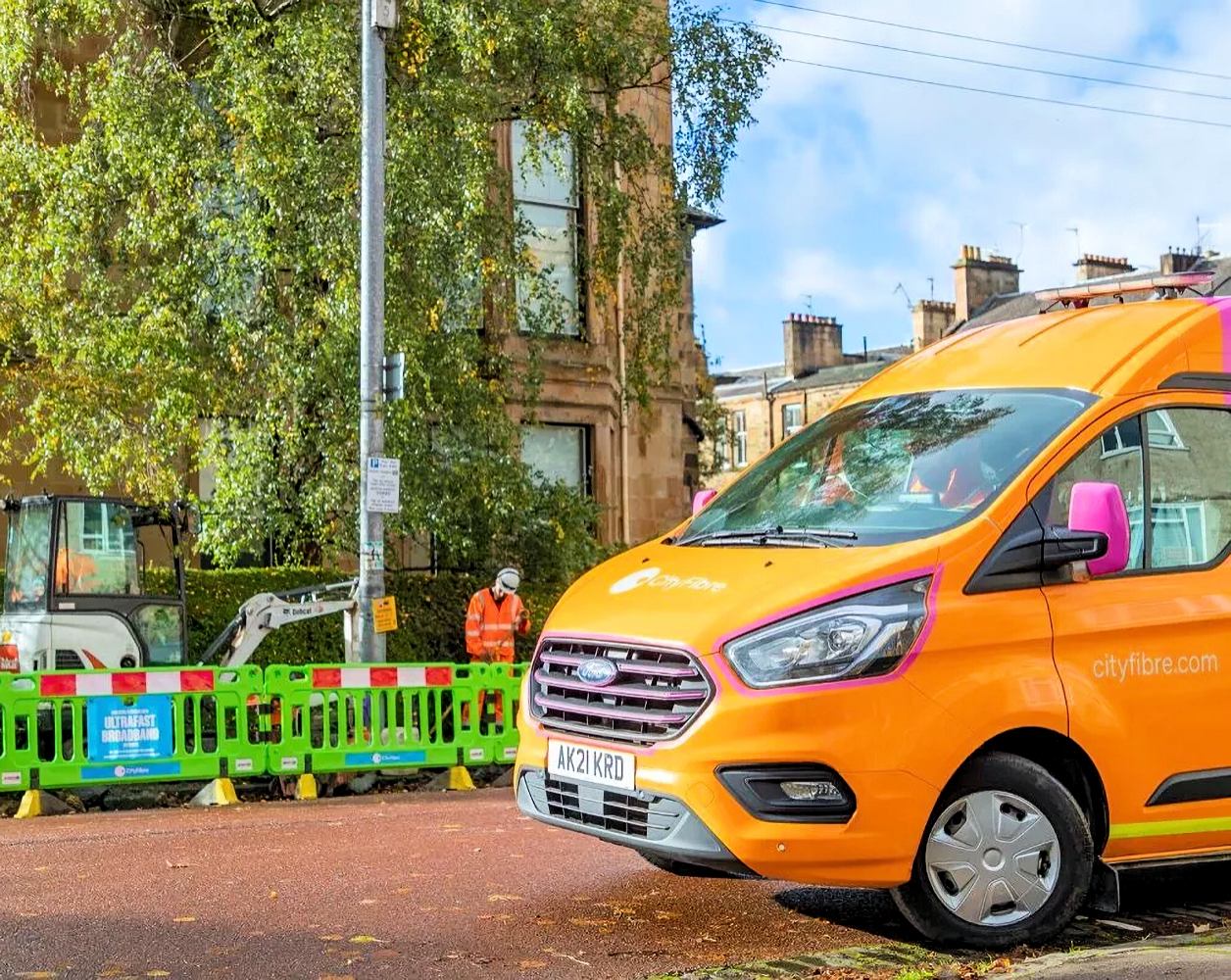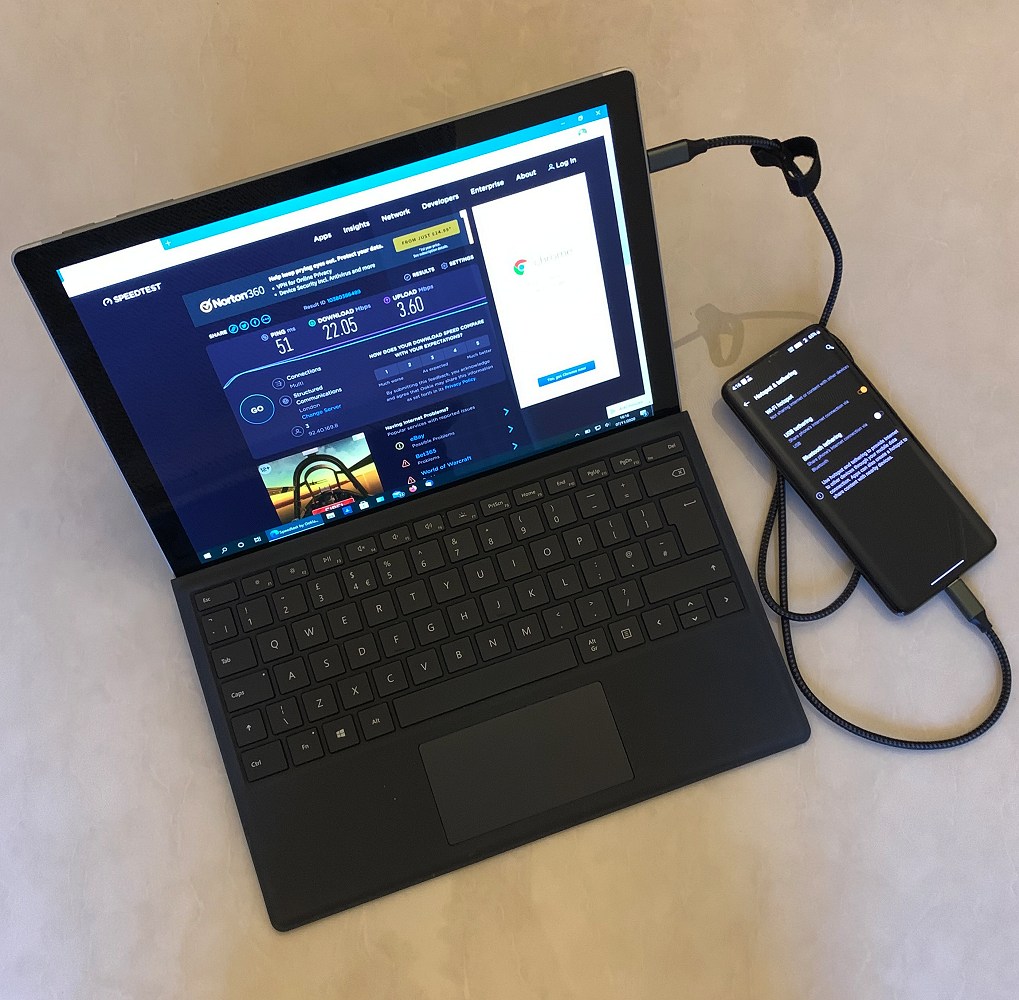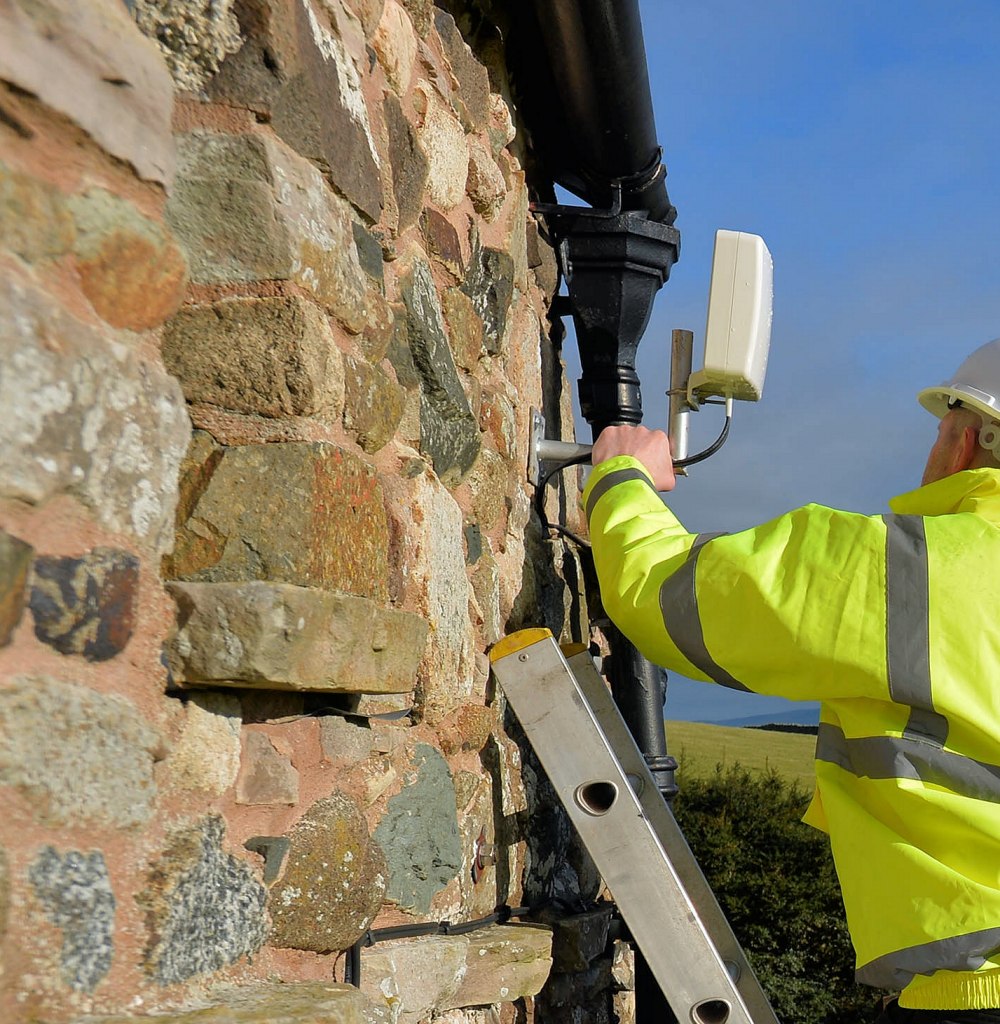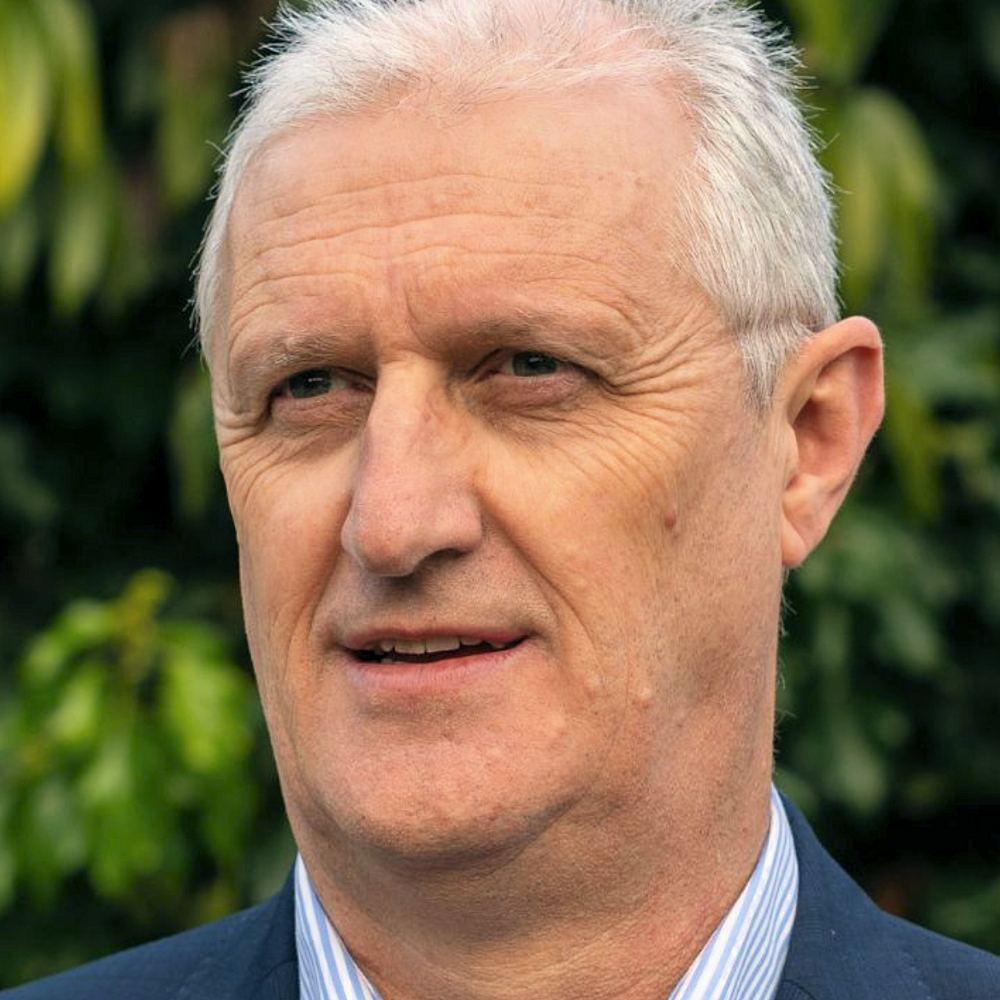A Brief Story of How One UK Village Got Stuck in Broadband Limbo

Across the country, you’ll find many rural villages that have fought and been successful in getting a gigabit-capable Fibre-to-the-Premises (FTTP) based broadband ISP network installed, often with the help of the Government’s voucher scheme. But sometimes even success stories can hit roadblocks, leaving locals stuck in limbo.
In this case, we’re going to take a quick look at the tale of Puddington in West Cheshire (England), which is home to almost 400 people. Back in March 2018 we reported that a small group of local volunteers had banded together (here) to start the B4RNCheshire project (part-built by B4RN itself), which aimed to help build a new full fibre network across six communities (Puddington, Burton, Capenhurst and more).
One of the first locations expected to benefit from this build, which began on the same day as the aforementioned announcement, was the village and civil parish community of Puddington. The reason for the deployment was because locals needed faster broadband and Openreach had, at that point, shown no interest in delivering full fibre to the area.
Shortly after this, some locals claimed to have seen Openreach engineers surveying the community and, by the end of 2020, most of nearby Burton had already gained access to Openreach’s full fibre services and work was starting to take place in Puddington. During the same period B4RN had made progress with their own project, reaching the villages and hamlets of Capenhurst, Woodbank, TwoMills and Shotwick.
However, B4RN’s deployment in Puddington only got so far, until they ran into problems with Openreach’s commercial build.
Michael Lee, B4RN’s CEO, told ISPreview.co.uk:
“Prior to starting the Puddington build we completed an initial phase of work which involved building a route in Capenhurst and the preparation works for the Puddington area including a roadside cabinet. At this stage properties in Puddington were showing as voucher eligible, and a B4RN project was viable.
In July 2021, as we prepared to start the next phase of the build, we applied for the remaining vouchers on the Puddington routes. At this point, the voucher applications were rejected on the grounds that the properties concerned were going to be served by commercial build. We challenged this decision with BDUK [Building Digital UK], but we were told that they had verified the commercial build plans.
We spoke with the Puddington volunteer group, explained the voucher situation and explored other options to raise the necessary funds to complete the project. As you know, the B4RN model asks each community we work with to raise investment to cover the gap between the build cost and the projected voucher income. After this meeting the group concluded that they could not see a viable way to raise the funds required and we decided together to regrettably close down the project.”
At this point the situation could be described as somewhat bittersweet because locals were, ultimately, still expecting to get a full fibre network and that’s a good thing. Except that’s not quite what happened. Openreach’s build did, initially, make some progress, but they seem to have only run FTTP to around 25 of the 139 local premises – served by three telecoms poles. Some other poles were left with fibre coiled up near the bottom.

For context. Openreach informed us that they began building Full Fibre to around 25 homes just outside the main village of Puddington back in 2018, but we’ve been informed by the operator that this early work was actually done under the BDUK programme and NOT their commercial build.
The aforementioned work was then completed by June 2019 and, in January 2020 they announced that they’d be building more Full Fibre across the Neston exchange area – which also serves Puddington – under their commercial programme.
However, Openreach appears to indicate below that they didn’t intend to cover the whole village via their commercial plans, which leaves a question mark over why BDUK rejected all of B4RN’s voucher requests for the rest of the village. But we’ll come back to that.
An Openreach spokesperson said:
“When we add an exchange to our delivery plan, we aim to build to as much of that exchange that we can given operational complexity and investment conditions, upgrading as many properties as we can. In Neston (the exchange that serves the village of Puddington), for example, we’ve built to more than 80 per cent of the exchange area. We’re also very clear that we probably won’t be able to reach 100% of the properties and in Neston, like other areas, there remain some properties that are too complex and costly to upgrade commercially right now.
In the Neston exchange area, a number of these are in the village of Puddington. That said, just because a property hasn’t been built to yet, it doesn’t mean we won’t try to reach it in the future. We’re always seeking ways to innovate and reach more homes and businesses.
More generally, we take our legal and regulatory obligations very seriously when making decisions as to where to build. The fact is, we’re building to 25 million homes and businesses across the UK so, as Ofcom recently stated, it’s likely that Openreach ‘will, at some point, deploy fibre in many areas where Altnets have built, or are planning to build, their networks. This is consistent with the strategy we implemented in the Wholesale Fixed Telecoms Market Review (WFTMR) which was intended to promote investment and competition.”
On speaking to BDUK about all this, the government agency confirmed that, in accordance with the strategy used in 2021, the GBVS eligibility criteria in place at the time excluded the whole Neston exchange area from vouchers (including the village of Puddington), which occurred after it had been announced by Openreach as being within their commercial plans.
So far as we can tell, the issue of B4RN’s rejection may thus also stem from BDUK having previously been too focused on postcode or exchange level coverage. Ofcom’s definition of Area 3 (non-competitive areas) was also updated in early 2021 (here), which might have added an extra layer of complexity to all this.
However, BDUK’s eligibility criteria is, today, based on their own surveys of market plans to exclude commercially viable premises at an “individual premises level” (i.e. such issues as the one described above would be less likely to occur again today).
A Government DSIT (BDUK) spokesperson said:
“All Gigabit Broadband Voucher Scheme applications are considered alongside commercial build plans announced by suppliers at the time. Should commercial rollout plans change, as has happened in West Cheshire, then the areas in scope for Project Gigabit will change accordingly.
We are reviewing our Project Gigabit plan for Cheshire and eligible premises in Puddington that do not end up being reached as part of that will likely fall into scope of the voucher scheme.”
As per DSTI’s comment, the most recent Open Market Review (OMR) in late 2022 (here) shows that the majority of the properties not yet built to are now being classified as “gigabit white“. In other words, no commercial build is now planned for them within the next 3 years, and they’ve thus been included into the Cheshire Lot 17 regional procurement under Project Gigabit.
The situation has left Puddington to be stuck in a state of broadband limbo. Both B4RN and Openreach have done some work in the community, but Openreach ceased their commercial build in the area shortly after starting and B4RN can’t secure new vouchers to finish the area because it’s now in procurement under Project Gigabit, which may or may not result in a contract being awarded to cover the village.
Naturally, locals are feeling a bit cheated, since B4RN were blocked from being able to complete their own build and then Openreach didn’t go further. “The point is that intentionally or unintentionally, a multi-billion pound organisation has comprehensively disenfranchised a small community and the years of hard work they had put in to get themselves better broadband,” said B4RN supporter and local resident, Peter Delaney. In fairness, BDUK’s inability to correctly adjust for the limitations of Openreach’s local build at the time were also part of the problem.
However, it’s worth noting that, aside from Project Gigabit’s plans, other commercial alternative networks (AltNets) are also now known to be exploring the possibility of a commercial build in the area. For example, Freedom Fibre’s recent coverage map (here) appears to include the same area. But that should be taken more as a very rough guide because AltNets may often only reach a small portion of the regions they target.
In fairness to Openreach though, the operator’s rollout plan is so vast – 25 million premises or 80%+ of the UK by December 2026 (some 6.2 million of which will be in rural or semi-rural areas) – that they can’t easily do all of that without creating some issues for smaller projects along the way.
Mark is a professional technology writer, IT consultant and computer engineer from Dorset (England), he also founded ISPreview in 1999 and enjoys analysing the latest telecoms and broadband developments. Find me on X (Twitter), Mastodon, Facebook and Linkedin.
« Grain Adds 6 UK Towns and Cities to FTTP Broadband Rollout
Latest UK ISP News
- FTTP (5688)
- BT (3558)
- Politics (2591)
- Openreach (2336)
- Business (2313)
- Building Digital UK (2269)
- FTTC (2059)
- Mobile Broadband (2030)
- Statistics (1822)
- 4G (1717)
- Virgin Media (1667)
- Ofcom Regulation (1488)
- Fibre Optic (1420)
- Wireless Internet (1415)
- FTTH (1383)






















































Would be interesting to know a bit more about the costs and why they are a blocker. Looking at Puddington aerial images on Google, it’s not a big place, and a careful route of cabling would yield property density figures surely not that different to much of suburbia? Or is the backhaul from Puddington to wherever that’s the big cost?
I think the comment from Michael Lee, the B4RN CEO, was largely correct but he was a bit brief on the subject of the project’s closure. The B4RN offer was £62,000 to build to around the first 20 properties. This included the charges for several road crossings and the street cabinet that they has already built. At the time we were expecting Openreach to rock up at any moment so I think asking the community for such a sum was simply not viable so we had no other option but to say no. A constructive dismissal of the project by B4RN if you like. However, although we rejected their offer we had not given up. We came up with many pragmatic suggestions that might (or might not) have resumed the project in another form. However, B4RN seemed generally uninterested in anything we suggested apart from backhauling our own ISP. In fact, B4RN have not actually responded to any communication from us at all since last October regarding the project. We remain slightly baffled as to why our community seem unable exploit the B4RN network in some way. As you point out Andrew, the area is small and we could build very economically if we needed to. The backhaul is 1km away over open fields for which we already have a wayleave. Sadly, B4RN have given no indication why our proposals were not suitable or otherwise. Surely, it must be possible for us to come together and actually get something built. If B4RN wish to reply here, we are all ears….
If Openreach have got some poles working with FTTP then the longer distance fibre won’t be the problem.
I’d bet if the village residents can stomach a few more poles in the middle of the village Openreach could get back on track.
I know the network well round there and no matter where you are in Puddings on the ducts to you go via the village centre.
@Andrew. Have you looked at B4RN’s accounts?
Thanks for that Peter, and other parties who’ve offered their contributions, all very interesting. At £3k per property, that’s a bit above what I’d have guessed at, but there’s other altnets with £3k per property costs, so it isn’t unique.
FibreBubble asked if I’d looked at B4RN’s accounts and the answer’s yes, but they’re only up to March 2021 (!). At that time, only 7,400 customers, capex per customer was about £2k, losing half a mill per year but that was amply covered by a buffer of share capital, and they had around £8m of debt. As they’re not a conventional company its difficult to say much from those, and of course B4RN have a funding model that’s based on communities finding the money.
Average house prices in Puddington are pretty steep (unsurprising for the Wirral), and whilst nobody wants to have to find £3k to download cat videos quicker, I’d have thought that having gigabit potential would easily add £3k to house prices, an uplift in the region of just under 1% of recent sale values. I can see both sides of the argument here, but the hard reality appears to be that Puddington either finds the money itself, or waits and prays for Project Gigabit, which is supposed to be awarded by April 2024, and presumably build over the following two years or so?
At the heart of this is the problem that government want to promote the (inefficient) duplication of telecoms infrastructure, to have these assets commercially owned, and then try all manner of fudges to get it built where the commercial case is weak or non-existent, limiting cross-subsidy and taxpayer funding whilst trying to ensure hard to serve communities do not bear all the costs. Then they’ve changed the delivery mechanism part way through, and people are getting angry about the perceived slowness of FTTP rollout. A typical mish-mash of conflicting policies that can’t ever work well, and especially so for B4RN.
@Andrew. My unqualified look at the books sees them way, way off their business plan. They were supposed to be in surplus years ago. From what I can make of it they have relied on more and more shares being sold and I wonder if that is going to dry up as Openreach roll out becomes more widespread.
@Andrew G £3k per property is high, gigaclear used to do that amount for rural but quickly cut it back. If all properties took the service it would take over 8 years at £30pm to pay off. B4RN charge £30pm for gigabit but the amount left to pay of infrastructure will be a lot less once the costs are taken away.
@Alex From what I can see £33pm = £27.50 +VAT .
It was the self-financing aspect of B4RN projects that attracted us in the beginning. As you rightly point out, Puddington is not an area of urban deprivation and it seems right (to me anyway) that if a community has the resources, it should fund its own build. Over time though, vouchers have greatly affected how B4RN projects are financed. Investment funding (shares and loans) finance only a small portion of B4RN project builds these days. The remainder is voucher funded which is great if you have access to vouchers. No so good if you don’t or, as we did, lose them for some reason and become a voucher bingo loser. This puts B4RN and the community concerned in a difficult position because without vouchers, the community would need to gift the shortfall to B4RN. In fact, in our case, and because of the delay and trauma our project suffered, B4RN kindly allowed the £62,000 to be all as investment. This didn’t help much though. The £62,000 was to connect 20 properties in the immediate vicinity of the cabinet. It would have cost far more to connect up the rest of the Puddington area with no guarantee that the funding for that would also be investment and not gifted. All this with Openreach in the wings (or so we thought) was just too big an ask. Now it seems Openreach are not coming any time soon so the situation has changed somewhat. We have ideas but the problem now (apart from B4RN not talking to us) is the low number of connections B4RN has in Cheshire (well under 100) and seemingly no plan to increase them. This leads us to doubt B4RN even wish to maintain a presence in Cheshire. Certainly enough doubt to prevent us from spending money on any solution that relies on them without some kind of guarantee B4RN are staying.
So, what we have is B4RN’s fibre 1km away across a field, Openreach’s fibre in a chamber next to the village green and seemingly no way of accessing either for all the various reasons mentioned. Ho Hum.
Alex A – I take your point, but £3k per property (when not paying OR or other last mile costs) is feasible if there’s the uptake. I’d imagine that further build would have a lower cost per property – Peter D may know) – but ignoring that, so long as it’s “only” £3k, then they’d need a £30 a month uplift on B4RN pricing to cover cost of capital with a 10-12% ROCE. Whilst an extra 30 a month is almost double what B4RN quote for their connections, £60 odd quid a month for a gigabit connection is the same as VM charge in urban areas. Would the burghers of Cheshire pay around £60 a month for a gigabit connection? In their shoes I would. Trouble is, when OR do arrive, and everybody wants to switch to Talktalk’s £25 a month offer things get a bit complicated. And that’s why I think infrastructure shouldn’t be competitive.
And to all involved, great debate in this thread, thanks!
This issue was known back before 2016. Post Codes are for deliveries and there are errors in PAF files rural and suburban. BDUK should have implemented premise level detail a lot earlier (Superfarce) and Ofcom reporting should also be published using premise level data.
Good news for most of these folks is that the majority of them in the Neston exchange now have OR FTTP.
The wider CH64 5** postcodes have around 93 White Premises (out of 410) to be covered by Lot 17. I hope that those already covered by OR FTTP are pragmatic and move from copper and that they are being suitably informed.
It would probably more practical and more expedient if OR were granted these premises but BDUK are tendering on a much large scale and there is no guarantee that the initial contract will include all or any of the 93. However outdoor 4G looks a good option for most outlying premises.
It may be a long wait for many who will continue not know whether their actual property is included or not in OR, Altnet or BDUK plans. If people knew they could at least look at investing in alternatives.
Similar position here in Hampshire – we had a voucher based FCP ready to go with properties signed up in November 2021, then OR announced they were too busy, then BDUK said they were going to tender Hampshire (which may or may not include our village, nobody knows).
18 months later we’re still waiting for the BDUK tender to complete. Hopefully later this year we’ll know if we are in the BDUK build or can start again with a voucher based scheme. Meanwhile Hampshire have run out of top up money for voucher schemes.
Hi @mike yeah Hampshire, went from 2 very successful fttc waves (waves one and two) to the extension of wave 2 and fttp internet being a flop.
The biggest flop was the issue inside of the New Forest, with more stake holders than normal with their own vested interests (which is mostly reasonable) but sadly Natural England threatened OR with a court injunction after they tried to put a standard junction box near the roadside! There is now a framework for fttp suppliers to work within Areas of natural beauty/national parks.
Hopefully this year we will see some of the areas in the new forest get fttp after a 6 year wait. The big problem is that Puddington is not alone, with fibre cable coiled up waiting for its full connection; sometimes for years.
Mike which fcp scheme was that in Hampshire
@mike, every time a story comes up like this those without fast broadband try to hijack the news article with their own broadband problems, for once can we comment on the Puddington story rather than distracting away for peoples own self gain.
The solution is simple. Give community projects like B4RNCheshire priority over commercial builds for getting access to the broadband vouchers. Once they announce initial plans they have a guaranteed funding when they present their final build plan. I see no problem if Openreach or other Altnet ends up overbuilding the same area, better for the locals to have some competition and different choices. And besides Openreach gives you access to a lot more services (BT/Sky Internet TV bundles, phone line, etc) that a lot of the Altnets don’t provide so while the internet portion is a similar service the rest it’s not.
Ultimately community projects like B4RNCheshire will have long term benefits in an area as they will provide cheaper internet access and the profits will be invested locally hence why it makes sense to put public money on them rather than funding BT’s profits.
“The solution is simple. Give community projects like B4RNCheshire priority over commercial builds for getting access to the broadband vouchers”
The commercial builds *don’t* get broadband vouchers at all – that’s what makes them ‘commercial’.
“I see no problem if Openreach or other Altnet ends up overbuilding the same area”
The problem is that if they do, within a short period of time anyway, it means that the taxpayer money on the subsidised voucher build was wasted.
Prime example of the digitalbritain superfarce. Let us just hope they get some vouchers sorted soon.
Since Ofcom have woken up maybe things will change and the altnets will get their share in future for these small communities.
Chris you seem to have missed the point that B4RN have nothing to shout about as they have also failed this village along with Openreach.
10s of unanswered emails, questions put forward for your AGM ignored/unanswered. You had vouchers in the area.
@Chris Conder – you could always cash in your MBE and help fund this project but I suspect not as all you do these days is complain about Openreach and do nothing to help.
This area has been badly badly let down both by Openreach and more surprisingly B4RN who’s supporters (e.g. Chris Conder) are normally very quick to criticise Openreach for their failing.
Misinformation on Openreach’s rollout plans have caused a lot of heartache for so many people across the UK and now B4RN are a let down too.
Talking of Openreach misinformation…
A few addresses on the outskirts of my village have access to FTTP from Openreach, confirmed by both the BTW checker and also Openreach engineers I spoke to while they were installing FTTP to one of the properties. As a result of this, I contacted Openreach to find out when my road might possibly get FTTP.
The reply was that there is no plan for my road or for the village in general and that there is not a single property in or even near the village with FTTP from Openreach.
The problem we found with B4RN was that they gave far too many false promises or didn’t even answer emails! They were incredibly slow and missed their opportunity as they did have vouchers for the area prior to BT coming along.
They are proving they are not knights in shining armour which they like to portray themselves as.
They can and should do more.
B4RN please get on the phone or email and start communicating with this village as it would be a good story for you.
Unfortunately this is going to become a more common occurrence. Community projects like B4RN rely on PIA for a lot of their build.
While these companies may voice their grievances with Openreach, they still rely on them and other providers for their primary backhauling infrastructure while constructing the last mile across farmland, which is relatively inexpensive and straightforward.
Unfortunately, when faced with obstacles or required to make significant investments themselves, they tend to abandon the project and move on to other ventures. This highly regarded Altnet has disappointed this community and I can see it happening again
B4RN use PIA? This is news to me and their pricing to the village seems crazy if this is the case. Anyone confirm?
B4RN don’t generally use PIA although they do occasionally if there is really no other alternative. B4RN usually direct bury all new infrastructure (mostly soft dig) using a duct and blown fibre approach. If they do use PIA I think it would only be duct as they don’t use poles at all as far as I am aware.
@anonymous
Your words are cheap, being anonymous you can claim to have done anything as you sit their in a bedroom in your parents house having achieved nothing in your life. You are not pro-community as you prove in your comments so stop pretending and try to grow up.
@Peter Delaney
We often get snipers here who try to shoot down those fighting these issues. I hope you and your community achieve your goal.
I was running a neighbouring project covering Mollington and neighbouring villages. We had just reached our first target for signups from residents and B4RN decided to drop our project on the rather spurious justification that railway bridges were now an insuperable problem. The railway bridges had been there since the late 1800’s and I had been assured by B4RN a year before that this should not be an issue.
From this article, I suspect the real reason may have been the issues that B4RN were experiencing in the Cheshire-B4RN project covering Capenhurst, Burton and Puddington.
Network Rail are extremely reluctant to grant wayleaves and this is not a new problem.
Hi Chris. Your B4RN project was going to share the dark fibre backhaul to Manchester and the implosion of our project certainly didn’t help yours. Originally, the B4RN Cheshire footprint was to cover about 1100 properties. Your project would have brought this up to around 2000 in total. What we have today is well under 100 properties actually connected via that expensive dark fibre backhaul with little prospect of that number increasing. However, it was not for the want of trying by both our projects and the thousands of hours we put in trying to get our communities access to B4RN’s superb gigabit broadband. It is a great pity that B4RN have shown so little interest in working with the communities here to get stuff built. Your project coming to an end was particularly baffling as, unlike our project, you still had access to vouchers across most of your footprint. We can only conclude that by ditching your project and refusing to talk to us that B4RN just don’t want to be in Cheshire any more. Of course, if B4RN have a take on this we are all ears..
If B4RN have let you down (the bounders!) then why don’t the evidently vociferous, energetic and organised residents of Puddington stop carping on about B4RN letting them down and ORGANISE IT THEMSELVES? The community were probably going to do elements of the mooted B4RN job, how about you make the rest of it happen? B4RN don’t owe you anything.
Its clear @anonymous you are NOT a very nice person.
No, @haha, you’re being unfair because you’re misreading malicious feeling into what I said. It was an honest and direct suggestion that using their skills, energy and organisation people of Puddington could organise this themselves – that’s essentially how B4RN started, in that nobody else was going to sort it out for them, so they did. Looking down all the posts, it’s more about “waaahhhhh! B4RN didn’t give us broadband” than “OK peeps, deep breath, what do we need to do now to get FTTP into the village”. Raise the money with something like a local music festival, country fair, farming & steam traction rally. I’ve lived places of similar size that have put on those sort of events to raise some tens of thousands. Or just use the proven Puddington tools of concerted letter writing, email carpet bombing and social media flame war techniques to make Puddington such a nuisance to local politicians that they find the money? It can be done, but only if the people there make it happen.
I’ve offered ideas to actually make something happen, as opposed to how it looks at the moment where all the energy is going into moping about the injustice of the world.
Why does that make me NOT a nice person?
@Anonymous Make the rest of it happen…um, well, we just looked it up and you are right. We reckon a few days work and we’ll be good to go. A couple of days for the core router installation at the Manchester IX and a day reading the Juniper manual, setting up transit, peering and backhaul.
Yes, upon reflection, it does actually seem quite easy after all. We’ll give it a go.
I’ve some 20km BiDi optics here you can borrow, Peter. Some fibre patch cables too. Weekend’s work at most, shouldn’t take more than a few years to get IP addresses from RIPE. Be good to go by 2028 say?
I wasn’t suggesting that it was a piece of cake, nor that every aspect could reasonably be done by Jethro from the farm, but there’s expletive hundreds of altnets all over the shop, they can organise it, why can’t the likely mix of skilled, clever, motivated people that make up the village? What is this magic sauce that only B4RN have? Indeed, if the village haven’t burnt their bridges with B4RN, that organisation would probably provide a lot of useful advisory for free. Looking at the tone of some comments, I worry that maybe bridges have been burnt.
I understand the village want FTTP. But they don’t want to pay for it directly, they don’t apparently want to sort it themselves, and at the moment if there’s a B4RN versus Puddington competition, I’m siding with B4RN.
@anonymous
Its easy for keyboard warriors like you who have a lot to say but put in the same position would type a comment here rather than doing anything for themselves.
@Anonymous. Setting up an AltNet requires a whole bunch of skills and money. B4RN, to their eternal credit, did a fantastic job of this. It wasn’t cheap though and it was only worth doing to achieve their vision of enabling dozens of deeply rural communities to build their own part of the network. As it turned out, the vision was, and is, a spectacular success. If you go and see what any one of these communities has a achieved by volunteer effort and sheer bloody-mindedness you can’t fail to be impressed. However, you can’t do what B4RN did to supply just one small community in leafy Cheshire. It would be financial madness. Sure, there are lots of AltNets out there and more all the time but they typically receive huge injections of venture capital to get done what they do. In the vast majority of cases this includes setting up their access to the internet. Not a leased line, but registering with RIPE, setting up their own Autonomous System, installing core routers in IX centres, arranging Peering, Transit and backhaul and employing people who know how all this stuff works and can maintain an excellent service to customers day in day out. B4RN do this. It is not obvious to the outside world maybe but their core network, and it’s quality, is vital to their success. On our own, we couldn’t do that. We could set up as an ISP but we would need to access the Internet through someone else’s core network. This could be a leased line. It could be a wavelength or dark fibre to B4RN’s core or anything in between. In our case, and being optimistic, we might eventually get FTTP in another couple of years if we just wait for Lot 17 to unwind. So, if we want to access fast internet significantly before then, it has to make financial sense and it has to be delivered quickly or it simply isn’t worth the effort. Realistically, it doesn’t look like Openreach are going to oblige and we have no vouchers. The obvious way forward would be some arrangement with B4RN. This would give us our FTTP as well as ensuring the continued presence of B4RN in Cheshire. If you detected a certain coolness in my tone you are not wrong, but we (and the neighbouring B4RN project) have put in a lot of effort over the years with limited success for all the reasons mentioned. We would have hoped that B4RN would acknowledge the issues we face, discuss options, and agree a pragmatic way forward. Frankly, it seems almost ridiculous to us that the B4RN backhaul is just a kilometre away across open fields and yet we can’t seem to come to some arrangement to use it. B4RN are deservedly successful and the service is fantastic. The people who are connected here in Cheshire are delighted with their gigabit symmetrical point-to-point connection for £33pm as are the vast majority of B4RN subscribers elsewhere. We just wish we were also part of this happy band.
@B4RN could do a lot more: “@anonymous, Its easy for keyboard warriors like you who have a lot to say but put in the same position would type a comment here rather than doing anything for themselves.”
And what, pray tell have YOU ever done for the world? I’ve participated in many community events to raise funds for a range of purposes, and if I was in Puddington shoes I’d be thinking “So sixty k now, how much for the next stage, now how do we raise the funds?”. And the curious thing here, is that if anybody’s keyboard warriors, its those sounding off about how it’s all B4RN’s fault, many of them apparently locals. I’ll exempt Peter Delaney from that as his contributions have been thoughtful, well informed, intelligent and polite.
But rather than throwing dirt around, let’s keep on the topic – and that topic is not how B4RN let the village down, or how unfair things are, it is how does this village get FTTP. Nobody likes my DIY proposal, there’s beggar all happening through the glacial processes of BDUK. Which leaves the idea that the apparently well orchestrated, engaged people of Puddington could use that organisation to take it to the local politicians and grind them down until they find a sizeable contribution – primarily county and borough councils, but you could take the parish councillors down a dark alley and put the frightners on them, grab their £11k annual fritterings, and the £7k of cash they’re sitting on, that’s almost a third of the £60k. Maybe keyboard warriors can at least do that?
My momentary perusal of the parish council accounts also confirms that the majority of properties in Puddington fall into council tax brackets E & G, I can say it’s a wealthy little place. Instead of being well-to-do middle class people complaining that somebody else didn’t do it for them, and gift them the money on a plate, maybe the people of Puddington need to find a solution. At those council tax bands (and property prices), many in the village will be business people, professionals and knowledge workers. They organise for a living, but this one thing is beyond them? I don’t think so, but perhaps they do.
@anonymous
Your words are cheap, being anonymous you can claim to have done anything as you sit their in a bedroom in your parents house having achieved nothing in your life. You are not pro-community as you prove in your comments so stop pretending and try to grow up.
@Peter Delaney
We often get snipers here who try to shoot down those fighting these issues. I hope you and your community achieve your goal.
@Peter Delaney Have you considered completing the rollout through an Openreach Community funded project? Given that Openreach fibre is already in the village centre, it would seem that it might not be so expensive to extend to other parts of the village? Openreach will pay their usual deployment cost per prem and the community would need to pick up the remainder. If there are vouchers available, they would could also be used to subsidise the cost, although from the article this seems not to be an option for you at this time. Maybe worth also lobbying BDUK? https://www.openreach.com/fibre-broadband/fibre-community-partnership
The whole rollout of fttp in this country is a farce. Apart from the fact the english
government could have started this over twenty years age, yes twenty, the current system is a typical DOFU (Department of **** Up’s) mess. OR/BT should have been charged with
sub-contracting out the civil works to the altnets, while upgrading their infrastructure to cope for the demand. Fttc, another farce, winging over unbundling, with the local authorities determining coverage by postcode, clearly the laws of physics was black magic to them.
Get the politics out of the equation.
You can’t get politics out of the equation, because it was a political decision to rely on markets and competition, and absent further political decisions, FTTP isn’t going to be delivered in low density areas by normal commercial mechanisms. And also because telecoms in its entirety is regulated, and although regulators apply the rules, the rules themselves are decided in every detail by politicians.
Of course, it doesn’t help that we’ve had many years of clueless and lazy ministers who wouldn’t understand what a twisted pair was even if you garroted them with it, nor that DCMS is seen as a joke ministership to be dished out to particularly dim-witted mates, nor even that we’ve has something like twelve Secretaries of State for DCMS in the past thirteen years. I wish there was a Competence Party to vote for, but unfortunately there isn’t one, and we have to choose from the meagre scrapings visible on either side of the Westminster Home for the Logically and Ethically Impaired.
@Anonymous We are fortunate to live in an affluent and beautiful area. In fact, much of the greater B4RN estate could be described this way. The problem is these areas are sparsely populated and the more spectacular the terrain the more challenging it is to build infrastructure. Together these factors can and do make some rural areas uneconomic to build in with cost per property often running into many thousands. So what to do ? Well, B4RN’s approach was to use what was available in the rural environment. Farmers and volunteers know how to bury plastic duct over hills and valleys. People were willing to contribute financially for the good of the community and for a good return on their investment. Landowners give free wayleaves. It works and before vouchers turned up, it actually cost the taxpayer very little. In our case, raising money was never an issue and we fully expected to finance our whole original footprint by share investment and loans. I can’t put my finger on the spreadsheet but this would have been well over £1m. In fact, the first £70k raised was used to finance the backhaul to Manchester, light the Capenhurst cabinet, and start connecting people. As this was happening, vouchers put in an appearance and our footprint was eligible for them. On the face of it, this seemed good. Now we had to raise a fraction of the amount we thought we would have to and build quicker. Over time, B4RN’s model shifted to actually depend on voucher funding (which meant they could reach more rural communities quicker) and so long as an area was eligible, and remained eligible, this worked out fine. Damn. What’s happened could simply be unintended consequences, but the fact remains we have fibre from 2 different suppliers right on our doorstep and can’t use either. Raising money isn’t an issue but it needs to result in connections sooner rather than later and for all of Puddington. If it doesn’t happen quickly then events will overtake us and FTTP will, eventually, arrive anyway. Only B4RN and Openreach have infrastucture here so unless one of them steps up, or vouchers are reinstated, the reality is nobody else is going to build here in a sensible timeframe. We are happy to physically build the network, but unless we have an arrangement with a supplier, we have nothing to connect it too. Moreover, the funds needed have to make sense for a small and increasingly sceptical community that has already waited over 5 years.
To clarify, Peter, are you saying B4RN’s business model has moved from self funding, JFDI, etc, to relying on taxpayer subsidy and this has left you guys out in the cold?
@Reality Bytes. Yes, B4RN’s business model has shifted. Projects do still have to raise capital via shares and loans but most of the cost is met by vouchers these days. I don’t know what the exact proportion is but, as I understand it is something like , a 90% Vouchers/ 10% Shares balance. I think it is essentially a condition of using voucher funding that dictates the level of investment required. I could be wrong though, so perhaps someone from B4RN could explain ? B4RN build into some of the most difficult areas and voucher funding has greatly accelerated that process. This subsidy is very cost effective because B4RN still very much use volunteers, soft digging, free wayleaves and community involvement to bring the cost down. Without B4RN, people simply wouldn’t get service or the tax payer would end up paying far more to get them connected. So, if subsidy has to happen, B4RN still gives the most bang for the buck. The more subtle change is that B4RN have adjusted their model to use voucher funding to the max. This means projects now depend heavily on voucher funding which, of course, doesn’t need to be paid back. If a project doesn’t have access to voucher funding then it has to supply the build cost it would have covered by another non-refundable means. In reality B4RN have some discretion on this and, in our case, they did kindly offer to allow the £62k as shares and loans. However, they were under no obligation to extend this facility to cover the remaining build. What all this does mean is that, for B4RN projects anyway, voucher funding is now crucial. What’s happening to B4RN is inevitable really. As it grows bigger it has to become more professional and less ‘DIY’ but, in my opinion, it is losing some of it’s roots in the process. For example, until very recently, the B4RN website used to have a coverage map and links to all the individual project website/facebook pages. This has now been replaced by a postcode checker which is all very corporate ISP. Intentionally or not, individual projects seem to being downplayed in preference to the B4RN brand. The only reference to projects now is in the relentlessly chipper items on the news page and on facebook (although there are links to project pages on individual items). Make no mistake, there is a lot to be proud of here, but some projects don’t pan out and, unsurprisingly perhaps, these don’t feature feature. So don’t always believe the cheery hype. B4RN projects can and do go wrong. Er..so yes, self funding is much reduced these days, more contactors and in-house civils are used, but JFDI is still very much there.